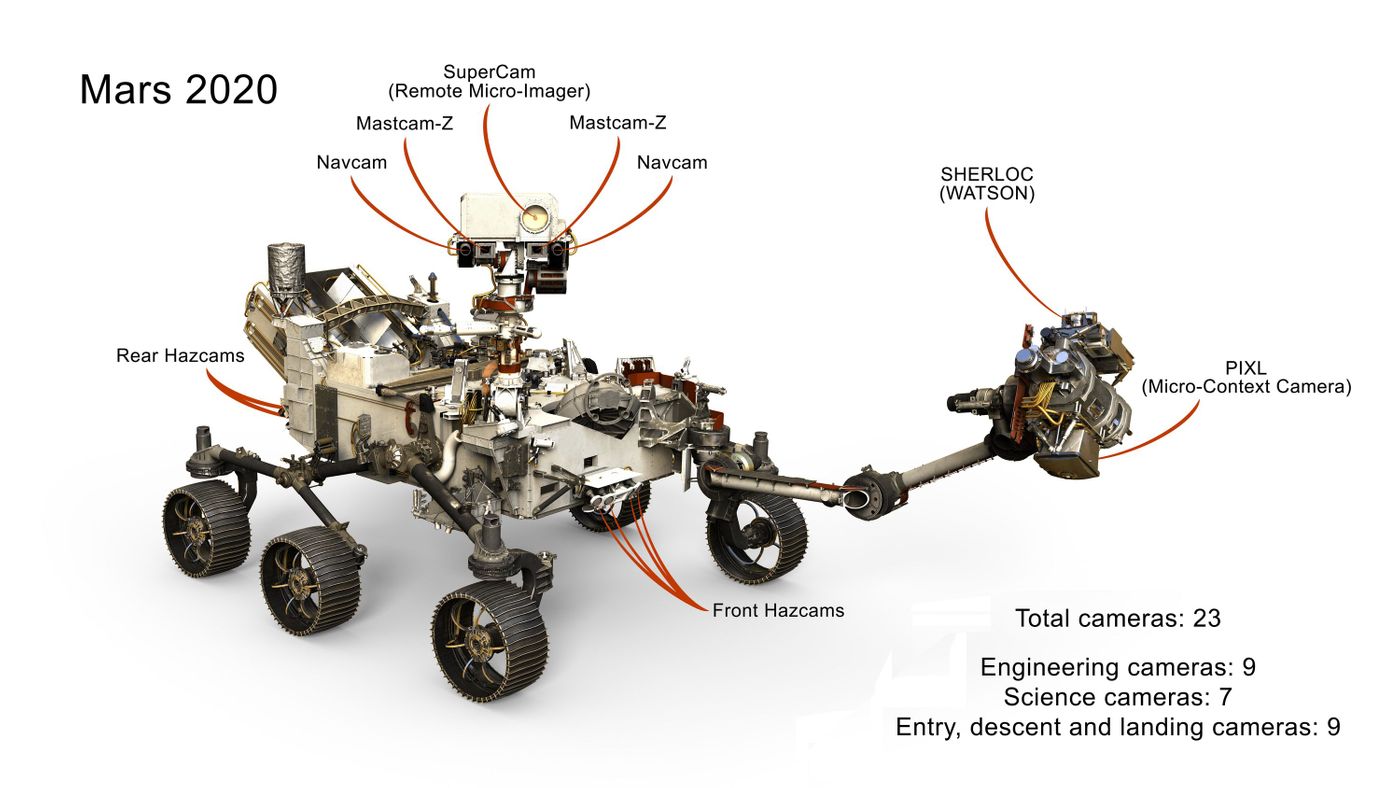NASA's Mars 2020 Rover Will Sport 20/20 Vision
Mars is a captivating planet, so it isn't too surprising that space agencies have put as much time and effort as they have into studying the world up close with the assistance of orbiters and rovers.
Just a few years from now, NASA will extend its footprint on the red planet with the upcoming Mars 2020 rover. Armed with a plethora of compact cameras and sensors, they hope to grab more detailed observations thanks to progressions in modern imaging technology.
Image Credit: NASA
Mars 2020 will be the most advanced Martian rover yet; equipped with 23 different optical sensors, it’ll have more cameras than any rover put on Mars before it. Comparatively, NASA cites the Curiosity rover as having just 17 cameras, while both the Opportunity and Spirit rovers had only 10 of them.
Most of the Mars 2020 rover’s cameras will reside on the exterior of the rover to study the planet while it makes its extensive trek, but one will live inside of the rover to analyze soil samples gathered along the way.
One of the cameras getting installed on the Mars 2020 rover’s chassis at NASA’s Jet Propulsion Laboratory (JPL) is the Mastcam-Z. It's an enhancement over the Curiosity rover’s Mastcam, as it has intensified zooming capabilities. NASA’s Justin Maki, a scientist familiar with the Mastcam-Z, had this to say:
“Camera technology keeps improving. Each successive mission is able to utilize these improvements, with better performance and lower cost.”
Related: China wants to send 13 different payloads to Mars by 2020
But the Mastcam-Z isn’t the only significant upgrade to Mars 2020; so are the engineering cameras. NASA says Mars 2020 will come standard with high-resolution 20-megapixel color Navcams and Hazcams, which are a step up from Curiosity’s 1-megapixel black and white cameras.
To accommodate for this augmented picture and video quality, Mars 2020 will include hardware and software upgrades to make sending the bigger data files back to Earth possible. Its communication equipment will see speed improvements, and its software will receive breakthrough compression methods to lessen file sizes and make it easier to beam said files back to Earth.
With technology becoming more cost-efficient and powerful at the same time, future rovers like Mars 2020 will begin to come standard with all the luxury features a planetary scientist could ask for. While it makes manufacturing the rover more time-consuming, it certainly pays off in the end as the extra work yields comprehensive views of the Martian surface and elevates our understanding of the worlds around us.
Mars 2020 is expected to launch by mid-2020, and we’re just as excited as those involved with the project to see what becomes of the mission.
Source: NASA









